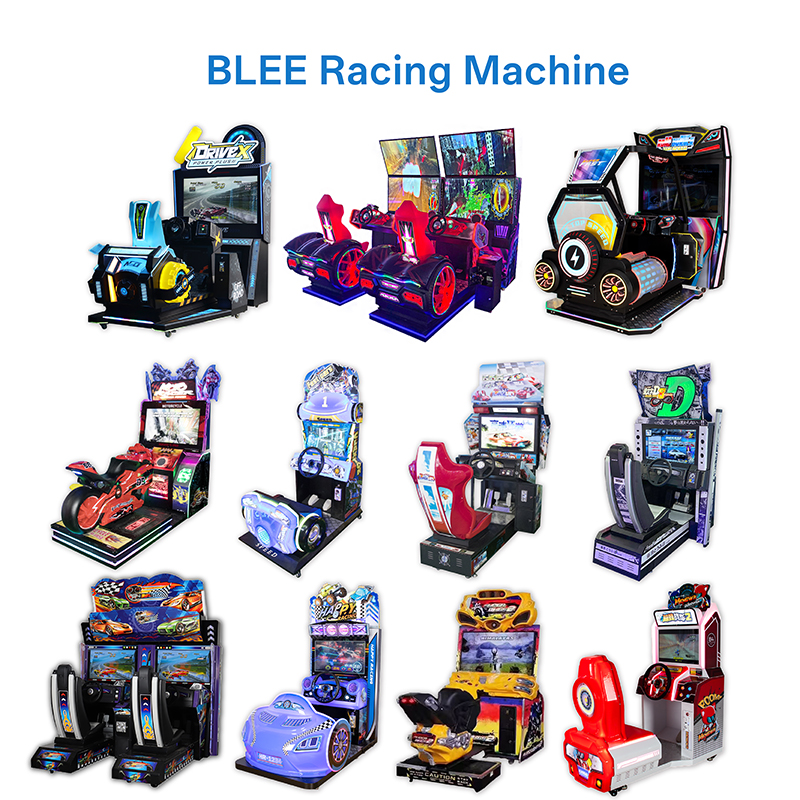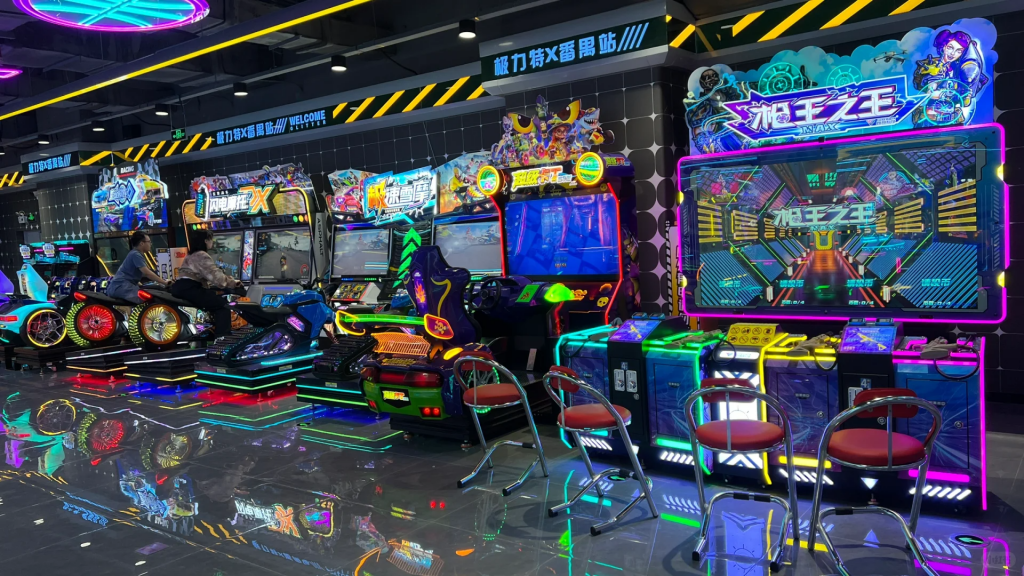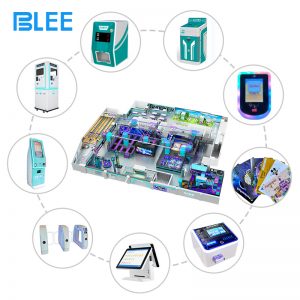Introduction
In 2025, the arcade racing game industry continues to accelerate — from classic racing arcade machines to immersive VR racing simulators, both are attracting attention from Family Entertainment Centers (FECs), shopping mall arcades, and eSports arenas.
But when it comes to profit and ROI, which type truly delivers better returns for your investment?
Let’s break down the differences in cost, popularity, and long-term profitability so you can make the right choice for your business.
🕹 1. Classic Racing Arcade Machines: The Proven Profit Driver
Traditional racing arcade machines remain the backbone of most FECs. These machines are stable, low-maintenance, and highly replayable.
Key Advantages
- 💰 Affordable Price Range: BLEE’s racing arcade machines start as low as $700 for compact models and up to $5,500 for dual-screen or motion setups.
- ⚙️ Durability: Designed for 12+ hours of daily use with minimal maintenance.
- 👨👩👧👦 Universal Appeal: Perfect for all ages — from kids to adults.
- 🔗 Multiplayer Options: Link up to 4–8 units for competitive play.
- 🧠 Smart Cloud Management: BLEE racing machines can sync real-time data, helping operators monitor revenue and player activity.
ROI Performance
With ticket prices at $1–2 per play and daily plays averaging 150–200, operators can easily earn $3,000–$8,000/month per zone.
Typical payback period: 3–6 months — making traditional racing arcade machines a low-risk, high-return investment.

🕶 2. VR Racing Simulators: Immersive but Costly
VR racing simulators represent the future of the arcade driving experience, offering a 360° immersive environment with seat motion, steering feedback, and panoramic visuals.
Key Advantages
- 🎮 Full Immersion: Realistic driving experience attracts thrill-seekers.
- 🔥 Premium Pricing: Players willingly pay $4–6 per game.
- 🌍 Brand Differentiation: Great for marketing and social media buzz.
Challenges
- 💸 Higher Cost: A commercial-grade VR racing simulator costs between $7,000–$8,000 per unit.
- 🧑🔧 Maintenance & Space: Requires more floor area (4–6㎡) and frequent technical upkeep.
- 📉 Learning Curve: Not every casual player enjoys wearing a headset or long calibration times.
While VR attracts attention, its longer ROI cycle (6–12 months) and higher maintenance cost make it better suited for large-scale arcades or theme parks, rather than small FEC startups.

⚖️ 3. Cost Comparison: BLEE Racing Machines vs. VR Racing
| Feature | BLEE Racing Arcade Machine | VR Racing Simulator |
|---|---|---|
| 💰 Unit Price | $700 – $5,500 | $7,000 – $8,000 |
| 🧍♂️ Players per Hour | 20–30 | 10–15 |
| 🧽 Maintenance Need | Low | High |
| 🧩 Space Required | 1–3㎡ | 4–6㎡ |
| ⏱ ROI Cycle | 3–6 months | 6–12 months |
| 💵 Profit per Day | $100–$300 | $150–$350 |
| 🌐 Cloud Data Support | Yes (BLEE Intelligent Cloud) | Optional / Depends on system |
From a pure ROI standpoint, standard BLEE racing arcade machines outperform VR setups due to their lower cost, faster turnover, and broader player base.
🚦 4. Hybrid Strategy: Combine Both for Maximum Traffic
Many successful arcades today use a hybrid model — mixing 70% traditional racing arcade machines with 30% VR racing machines.
This setup:
- Keeps entry prices attractive
- Offers premium VR experiences for upselling
- Creates a visually dynamic racing zone that appeals to both casual and hardcore players
BLEE’s arcade design team can help plan your racing zone layout, ensuring the ideal balance between high-revenue and high-experience machines.

💼 5. BLEE — Your Partner for Profitable Racing Game Business
BLEE provides turnkey racing arcade solutions, covering every step from equipment to installation and data management.
Why Choose BLEE
- ✅ 15+ years of arcade game manufacturing experience
- ✅ Full range of racing arcade machines, from kids’ models to VR simulators
- ✅ Cloud management system for real-time revenue monitoring
- ✅ Multilingual software and customizable cabinets for global markets
- ✅ FEC project planning service — from design to delivery
Whether you’re starting a small racing arcade business or upgrading your existing FEC racing area, BLEE helps you build a profitable setup with the right machines and ROI strategy.
Conclusion
When comparing racing arcade machines vs. VR racing simulators, the numbers speak for themselves:
- For quick ROI and stable income, choose traditional BLEE racing machines.
- For brand differentiation and high-end experience, add 1–2 VR racing simulators as a premium attraction.
With BLEE’s wide product range — from $700 mini driving arcades to $8,000 VR racing simulators — investors can customize their ideal racing game business model according to budget and market demand.
📩 Ready to start your own racing arcade business?
Contact BLEE today for a free racing zone design and profit forecast.
FAQ
Q1: What’s the best racing arcade machine for small spaces?
BLEE’s mini racing cabinets, starting from $700, are perfect for compact game zones or malls.
Q2: Is VR racing profitable for small arcades?
VR machines generate higher ticket prices but have longer payback times; best used as premium add-ons.
Q3: How can I manage my arcade remotely?
BLEE’s cloud platform lets you track machine data, usage, and earnings in real time.
Q4: Can BLEE help with arcade layout planning?
Yes — BLEE provides complete FEC racing zone layout and setup support for investors.


